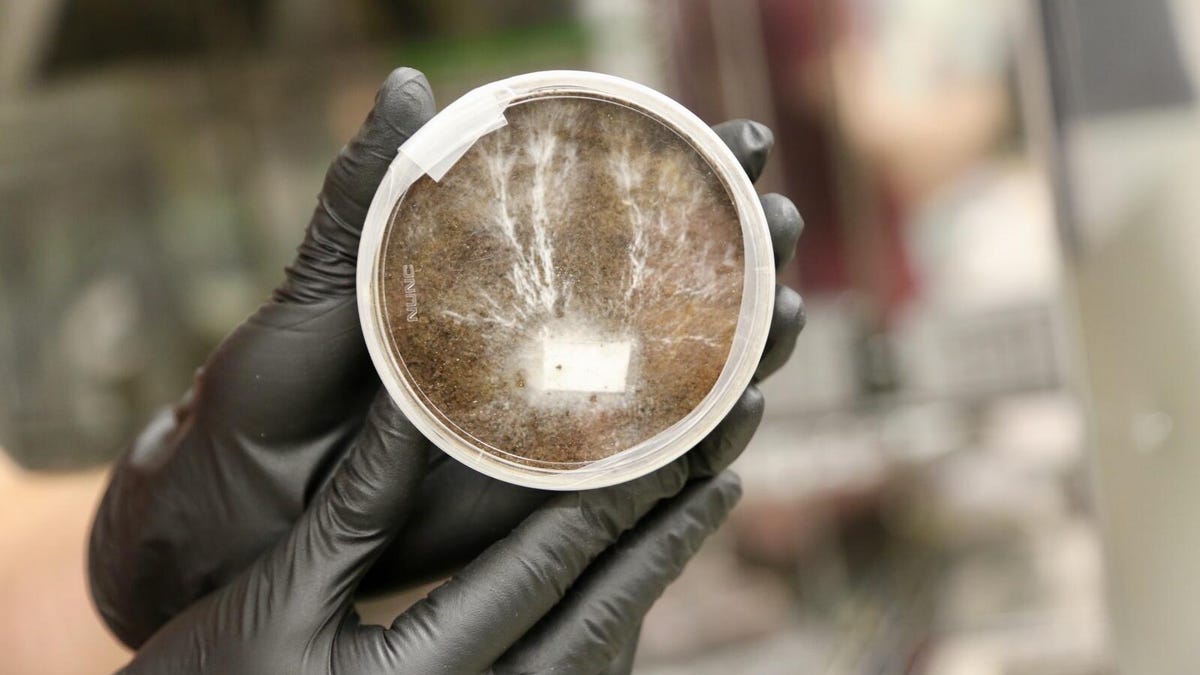NASA's Mars habitats could be made from a surprising material: fungi
Please step into my humble Mars mushroom room.

This shows mycelium growing on simulated martian soil.
NASA dreams of building homes for humans on Mars, but it's not so easy to pack tons of building materials and haul them all the way through space to the Red Planet. That's why the agency is interested in alternative ideas, including the possibility of growing abodes out of fungi.
The NASA Innovative Advanced Concepts (NIAC) program has funded research into the viability of myco-architecture processes that could harness fungi to grow habitats for the moon and Mars.
The concept focuses on the mycelia part of a fungus. "These tiny threads build complex structures with extreme precision, networking out into larger structures like mushrooms," NASA said in a statement on Tuesday. The agency posted a video describing the habitat idea and showing off some concept art.
The habitat concept involves a three-layered dome consisting of water ice on the exterior; cyanobacteria (which produces oxygen and nutrients) in the middle; and an inner layer of mycelia, which feeds and grows around a framework to create the Mars home.
NASA said the structure would be "baked to kill the lifeforms, providing structural integrity and ensuring no life contaminates Mars and any microbial life that's already there."
This stool was grown with mycelia as part of a 2018 experiment.
Researchers have already experimented with creating objects using mycelia. A team from Stanford and Brown universities grew a functioning stool as part of a myco-architecture project at NASA Ames Research Center in 2018. After two weeks of growth, the stool looked like something that had been long forgotten in a refrigerator. It was then baked.
The ideas behind Mars habitats could potentially be transferred to fulfill Earth construction needs.
"When we design for space, we're free to experiment with new ideas and materials with much more freedom than we would on Earth," said NIAC myco-architecture principal investigator Lynn Rothschild. "And after these prototypes are designed for other worlds, we can bring them back to ours."
The research is still in very early stages, but it shows how scientists are working to expand the horizons when it comes to future off-world human habitats.
Originally published Jan. 15.

